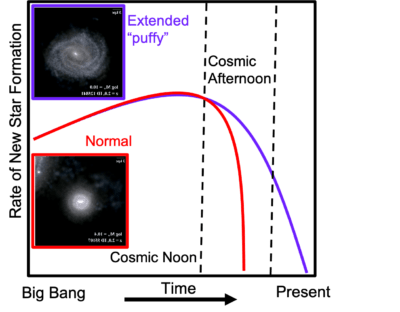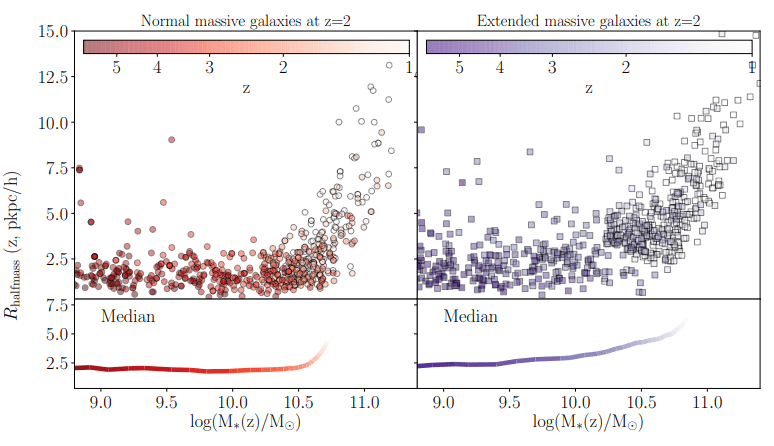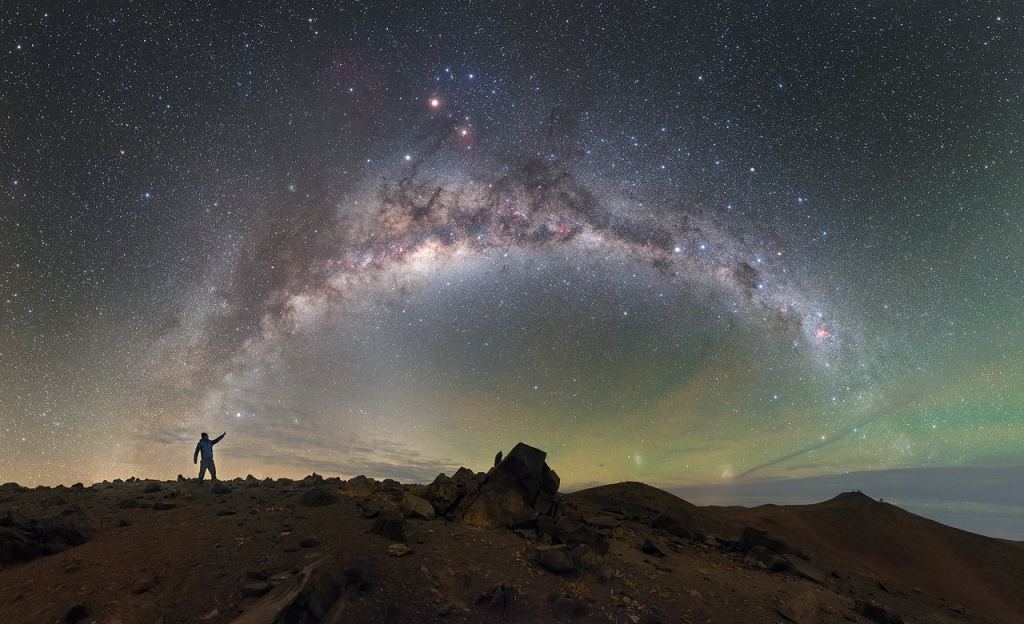A galaxy's main business is star formation. And when they're young, like youth everywhere, they keep themselves busy with it. But galaxies age, evolve, and experience a slow-down in their rate of star formation. Eventually, galaxies cease forming new stars altogether, and astronomers call that quenching. They've been studying quenching for decades, yet much about it remains a mystery.
A new study based on the IllustrisTNG simulations has found a link between a galaxy's quenching and its stellar size.
About 10 billion years ago, the Universe was in what cosmologists call the "Cosmic Noon." That was when star formation in galaxies peaked. How and why galaxies stop forming stars since then has been mysterious.
In a new paper titled " MOSEL and IllustrisTNG: Massive Extended Galaxies at z = 2 Quench Later Than Normal-size Galaxies," a team of researchers wanted to examine quenching. The lead author of the study is Dr. Anshu Gupta of Australia's ARC Centre of Excellence in All Sky Astrophysics in 3 Dimensions (ASTRO 3D). The paper will be published in The Astrophysical Journal.
"There's a period in the life of the Universe known as the 'cosmic noon,' which occurred about 10 billion years ago," said Dr. Gupta in a press release. "That was when star formation in massive galaxies was at its peak. After that, gas in most of these galaxies grew hot – in part because of the black holes in the middle of them – and they stopped forming stars."
Cosmic noon also saw galaxies develop the characteristics we see today: regular rotating disk and bulges, for instance. That was also when a population of dead galaxies, or quenched galaxies, started to emerge. Something was going on.
Cosmic noon wasn't only a period of peak star formation. It was also a period of peak black hole accretion. As the black holes at the center of galaxies grew more massive, they drew the galaxy's gas towards them, compressing and heating the gas. But stars need cold gas to form; hot gas refuses to coalesce and collapse into a star.
But this compression and heating effect didn't dominate all galaxies. For a puffier, less dense galaxy with more space between stars, the black holes didn't have the same effect. They couldn't reach enough of the gas to quench star formation.
"In galaxies that are really, really stretched out, however, we found that things didn't heat up as much and the black holes didn't exert such a great influence, so stars kept getting made over a longer period."
The team of researchers focused on what's called the galactic disk. The galactic disk is a flattened circular region surrounding the nucleus, and it contains stars, gas, and dust. If that disk is spread out instead of compact, then star formation persists, and quenching is delayed.
"Where the stars in the disk are widely distributed – you could call it 'puffy' – the gas stays cooler, so continues to coalesce under gravity and form new stars," said Dr. Gupta. "In galaxies with more compact disks, the gas heats up quite quickly and is soon too energetic to mash together, so the formation of stars finishes by just after cosmic noon. Puffy disks keep going much longer, say as far as cosmic afternoon tea."
Their study found that by z=1, only 36% of extended massive galaxies had become quenched, while 69% of the more normal size massive galaxies had become quenched. By z=2 to 4, they found that "...normal-size massive galaxies build up their central stellar mass without a significant increase in their stellar size." But for extended massive galaxies, their stellar mass nearly doubled.
This research relied on both observations and simulations.
The IllustrisTNG simulations were an ambitious effort involving mostly German and American scientists. The IllustrisTNG website describes the effort best: "Each simulation in IllustrisTNG evolves a large swath of a mock Universe from soon after the Big-Bang until the present day while taking into account a wide range of physical processes that drive galaxy formation. The simulations can be used to study a broad range of topics surrounding how the Universe — and the galaxies within it — evolved over time."
So what do these results mean? "The results mean that for the first time we've been able to establish a relationship between disk size and star-making. So now astronomers will be able to look at any galaxy in the Universe and accurately predict when it will stop making stars – just after lunch, or later in the cosmic afternoon."
The Milky Way is humanity's home. Where does our galaxy fit in all this? The Milky Way is a late bloomer, as it turns out. It was here at cosmic noon, but it was still very small and decidedly un-massive. At that point in time, it had only one-tenth of the star mass it has now. It's grown more massive over time, thanks to mergers. Now it's a massive galaxy, but it's still making stars.
So where are we now in the cosmic-galactic day timer? "Cosmic noon was a long time ago," said Dr Gupta. "I'd say that by now the Universe has reached cosmic evening. It's not night-time yet, but things have definitely slowed down."
The team behind this study integrated the IllustrisTNG simulations with observations from the Multi-Object Spectroscopic Emission Line (MOSEL) Survey. MOSEL relied on the Hubble Space Telescope and the W.M. Keck Observatory. The team included scientists from the UK, Germany, Mexico, the USA, and Australia.
 Universe Today
Universe Today



